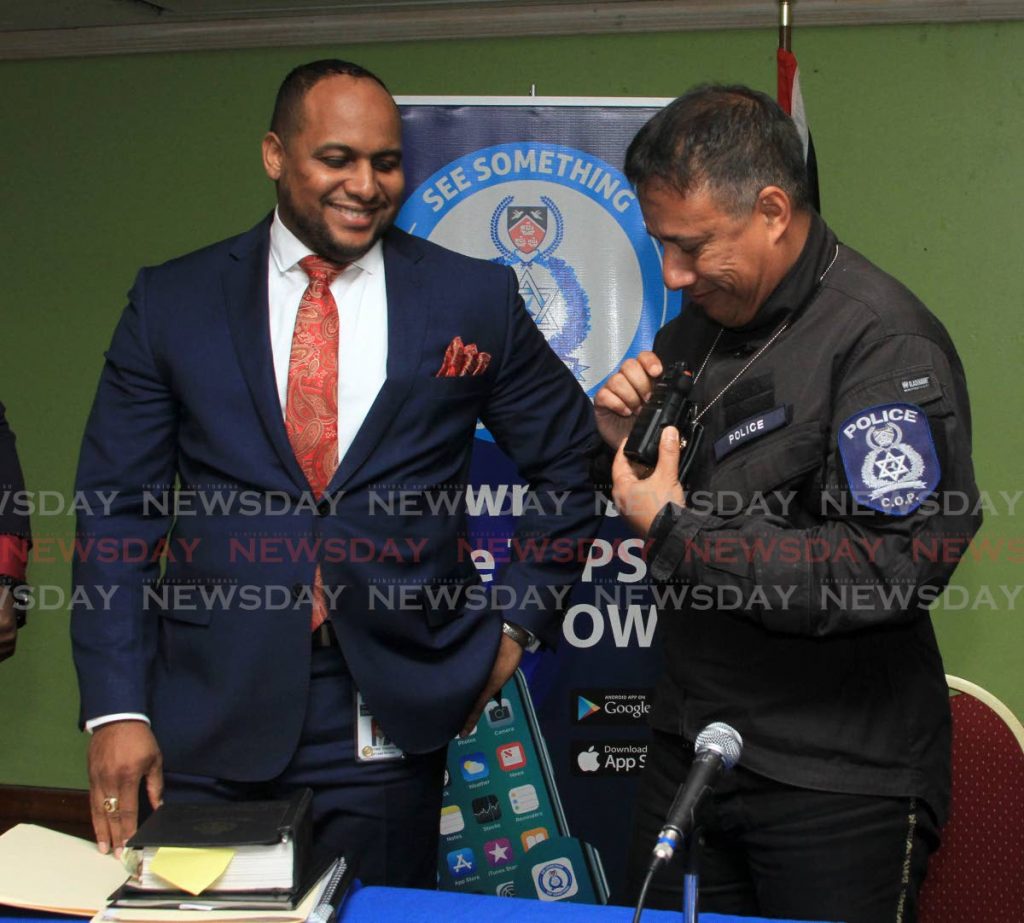CoP: 180 body cams in use

Police Commissioner Gary Griffith said while police body cameras were a useful addition to the equipment of officers on the ground, they were not the be-all and end-all of transparency initiatives.
Speaking at Thursday's weekly police media briefing on Sackville Street, Port of Spain, Griffith responded to comments by the leader of the Movement for Social Justice (MSJ) David Abdulah that not enough body cameras were available, in light of claims of extra-judicial police killings.
"In total contrast to his (Abdulah's) misleading comments, the police have issued over 100 body cameras to officers and another 80 cameras recently...These body cameras are battery operated. There is a standard operating procedure that when the police are leaving the vehicles they are activated while on patrol.
"Over 100 police vehicles are equipped with cameras that give a real-time video footage sped back to the Operational Command Centre, in contrast to the body cameras where the footage is obtained after the fact."
Griffith said body cameras were aimed at not only protecting the public but also the officers during confrontations.
He added that the sound recorded during a confrontation with a criminal could be used as evidence.
"The audio can assist to add who was the person to cause the escalation of the situation."
Referring to the death of Roger Cabie of Carapo on Tuesday, Griffith said body cameras were especially important in situations where the public insisted there was some wrongdoing on the part of the police.
Police strategic adviser Dwight Andrews also said there were situations in the field where the view of a body camera could be obscured during a confrontation.
Referring to the murder of Rayshard Brooks in Atlanta, in the US, which led to the arrest of a police officer, Andrews agreed with Griffith that the audio could sometimes be more valuable than video footage.
"The actual part of the camera that tends to be used for an evidential value, more so than the camera itself, is the sound.
"For instance, in Atlanta, you will know one of the reasons that led to the felony murder charge against the officer was not the picture on the camera, but at the end of it they heard him say, 'I got him.'
"So the sound is very critical in a body camera. So we encourage the officers to keep wearing them because even should we not get video, the audio is extremely important."
Since the briefing, police shot and killed Andrew "Stoneman" Reno in Santa Cruz. The police said he opened fire on officers who were executing a warrant to search for firearms and ammunition at a three-storey apartment complex in Santa Cruz on Thursday night. Reno died at hospital. A 9 mm gun and ammunition were found along with $40,000 and marijuana at Reno's apartment.



Comments
"CoP: 180 body cams in use"